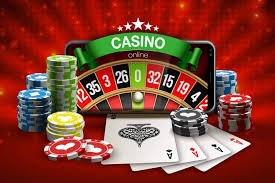The Evolution of Music From Classical Roots to Modern Beats

The Evolution of Music: From Classical Roots to Modern Beats
Music has been an integral part of human civilization for thousands of years. From the ancient rhythms of drums to the complex harmonies of orchestras, Music https://www.azlyrics.us/ music has evolved alongside humanity, reflecting cultural changes, technological advancements, and artistic innovations. This article explores the journey of music from its earliest forms to the diverse genres we enjoy today.
1. The Origins of Music
The roots of music can be traced back to prehistoric times when early humans likely used their voices and simple instruments akin to drums and flutes. Anthropologists believe that music served several functions: it was a means of communication, a tool for social bonding, and a ceremonial accompaniment for religious rituals. Utilizing natural objects like stones and wood, ancient societies created primitive instruments, paving the way for more sophisticated music-making.
2. Ancient Civilizations and Music
As civilizations began to form, music evolved significantly. In ancient Greece, philosophers like Pythagoras analyzed musical scales and their mathematical foundations, leading to a greater understanding of harmony and melody. Music was a vital part of Greek culture, used in theater, festivals, and education. Similarly, music in ancient Egypt was intertwined with religious practices and daily life, featuring instruments such as harps and lyres.
The Romans carried musical traditions from Greece and expanded upon them, incorporating music into gladiatorial games and public festivities. Throughout these early civilizations, music notation systems began to develop, allowing compositions to be recorded and shared.
3. The Medieval Period and Religious Music
During the Medieval period, music experienced significant transformation as it became intertwined with religious practices. Gregorian Chant emerged as a dominant form of music in Christian worship, characterized by its monophonic texture. The development of polyphony—music featuring more than one melody—marked a pivotal point in music history. Composers began experimenting with different vocal arrangements, leading to complex choral works.

Secular music also flourished during this time, with troubadours and minstrels traveling across Europe, sharing folk songs and stories. Instruments like the lute and vielle gained popularity, giving rise to early forms of music that were independent of religious contexts.
4. The Renaissance and the Birth of New Genres
The Renaissance period (14th to 17th century) was a time of great artistic rebirth and innovation. Music experienced a surge in creativity, characterized by the expansion of harmonic structures and the development of new genres. Composers like Josquin des Prez and Thomas Tallis pushed the boundaries of musical forms, creating intricate polyphonic compositions that showcased the human voice’s full potential.
The invention of the printing press during this era significantly impacted music distribution. For the first time, sheet music could be printed and disseminated widely, making music more accessible. This period also saw the emergence of instrumental music as a distinct form, with the development of various instruments and ensembles.
5. The Baroque Period: A Symphony of Sounds
The Baroque period (1600-1750) was marked by dramatic shifts in musical expression, characterized by its ornate melodies and elaborate ornamentation. Composers like Johann Sebastian Bach and Antonio Vivaldi brought forth a new level of complexity in their works, experimenting with forms like the concerto and opera. The use of contrast between solo and ensemble groups became a hallmark of Baroque music.
The development of major and minor tonalities laid the groundwork for modern Western music, establishing a system of harmony that composers would build upon for centuries. Opera flourished during this time, combining music with theatrical elements to create a new form of storytelling.
6. Classical and Romantic Eras
The Classical period (1750-1820) emphasized balance, clarity, and structure. Composers such as Wolfgang Amadeus Mozart and Ludwig van Beethoven shifted the focus from complex polyphony to homophonic textures, allowing melodies to shine. The symphony and string quartet emerged as principal forms, captivating audiences with their emotive power and technical prowess.

The Romantic era (1820-1900) followed, characterized by emotion and individual expression. Composers sought to break free from traditional constraints, exploring new themes of nationalism, love, and nature in their works. Figures like Franz Liszt and Pyotr Ilyich Tchaikovsky pushed the boundaries of musical form and harmony, leading to highly expressive compositions that resonated deeply with listeners.
7. The Birth of Modern Music: 20th Century Innovations
The 20th century heralded a dramatic shift in music, with the emergence of countless genres and styles. Jazz, rooted in African American culture, revolutionized the music scene with its improvisational nature and syncopated rhythms. Icons like Louis Armstrong and Duke Ellington brought jazz to the mainstream, influencing countless musicians across diverse genres.
The rise of rock ‘n’ roll in the 1950s, spearheaded by artists like Elvis Presley and Chuck Berry, marked another significant trend. This genre’s infectious energy and rebellious spirit led to cultural changes around the world. The decade also birthed influential musicians such as The Beatles, who transformed popular music, paving the way for new forms of expression and experimentation.
8. Contemporary Music and the Digital Age
Today, music is more globalized and diverse than ever. The advent of technology has shaped how we create, share, and consume music. Streaming platforms like Spotify and Apple Music have revolutionized the music industry, providing unprecedented access to a vast catalog of songs from all over the world.
Genres continue to blend and evolve, resulting in unique fusions that challenge traditional classifications. Hip-hop, EDM, and indie pop are just a few examples of contemporary genres that have emerged from the interplay of various cultural influences. The accessibility of music production software has allowed aspiring artists to create and share their work without the need for major record labels.
Conclusion: The Universal Language of Music
From its ancient roots to the modern sounds of today, music remains a vital part of the human experience. It transcends cultural and linguistic barriers, offering a universal language that speaks to our emotions and connects us all. As music continues to evolve, it will undoubtedly reflect the changing landscape of society, serving as both a mirror and a catalyst for cultural expression.

